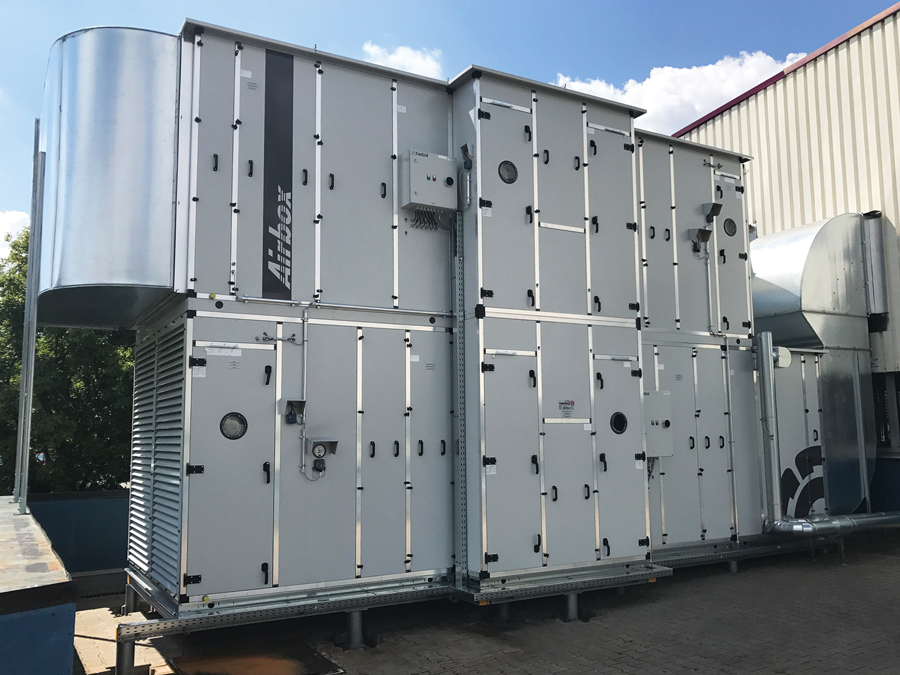Clean-Room Air Conditioning Systems
Clean-room or clean-space air conditioning systems serve spaces where there is a need for critical control of particulates, temperature, relative humidity, ventilation, noise, vibration, and space pressurization. In a clean-space air conditioning system, the quality of indoor environmental control directly affects the quality of the products produced in the clean space.
A clean-space air conditioning system consists of a recirculating air unit and a makeup air unit—both include dampers, prefilters, coils, fans, high-efficiency particulate air (HEPA) filters, ductwork, piping work, pumps, refrigeration systems, and related controls except for a humidifier in the makeup unit (refer to Chap. 30).
Space Conditioning Air Conditioning Systems
Space conditioning air conditioning systems are also called space air conditioning systems. They have cooling, dehumidification, heating, and filtration performed predominately by fan coils, water source heat pumps, or other devices within or above the conditioned space, or very near it. A fan coil consists of a small fan and a coil. A water-source heat pump usually consists of a fan, a finned coil to condition the air, and a water coil to reject heat to a water loop during cooling, or to extract heat from the same water loop during heating. Single or multiple fan coils are always used to serve a single conditioned room. Usually, a small console water-source heat pump is used for each control zone in the perimeter zone of a building, and a large water-source heat pump may serve several rooms with ducts in the core of the building (interior zone, refer to Chap. 28).
Space air conditioning systems normally have only short supply ducts within the conditioned space, and there are no return ducts except the large core water-source heat pumps. The pressure drop required for the recirculation of conditioned space air is often equal to or less than 0.6 in. water column (WC) (150 Pa). Most of the energy needed to transport return and recirculating air is saved in a space air conditioning system, compared to a unitary packaged or a central hydronic air conditioning system. Space air conditioning systems are usually employed with a dedicated (separate) outdoor ventilation air system to provide outdoor air for the occupants in the conditioned space.
Space air conditioning systems often have comparatively higher noise level and need more periodic maintenance inside the conditioned space
Unitary Packaged Air Conditioning Systems
Unitary packaged air conditioning systems can be called, in brief, packaged air conditioning systems or packaged systems. These systems employ either a single, self-contained packaged unit or two split units. A single packaged unit contains fans, filters, DX coils, compressors, condensers, and other accessories. In the split system, the indoor air handler comprises controls and the air system, containing mainly fans, filters, and DX coils; and the outdoor condensing unit is the refrigeration system, composed of compressors and condensers. Rooftop packaged systems are most widely used (refer to Chap. 29).
Packaged air conditioning systems can be used to serve either a single room or multiple rooms. A supply duct is often installed for the distribution of conditioned air, and a DX coil is used to cool it. Other components can be added to these systems for operation of a heat pump system; i.e., a centralized system is used to reject heat during the cooling season and to condense heat for heating during the heating season. Sometimes perimeter baseboard heaters or unit heaters are added as a part of a unitary packaged system to provide heating required in the perimeter zone.
Packaged air conditioning systems that employ large unitary packaged units are central systems by nature because of the centralized air distributing ductwork or centralized heat rejection systems. Packaged air conditioning systems are characterized by the use of integrated, factory-assembled, and ready-to-use packaged units as the primary equipment as well as DX coils for cooling, compared to chilled water in central hydronic air conditioning systems. Modern large rooftop packaged units have many complicated components and controls which can perform similar functions to the central hydronic systems in many applications


No comments:
Post a Comment